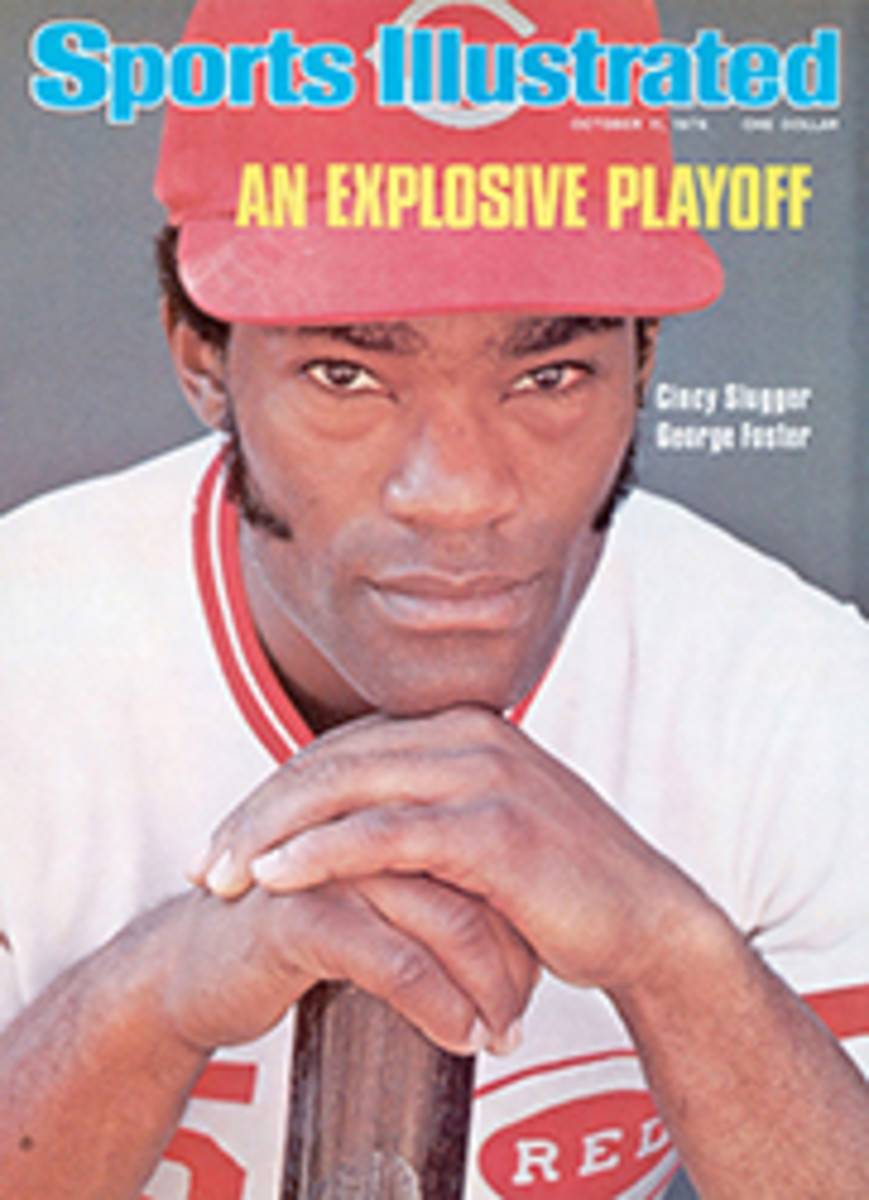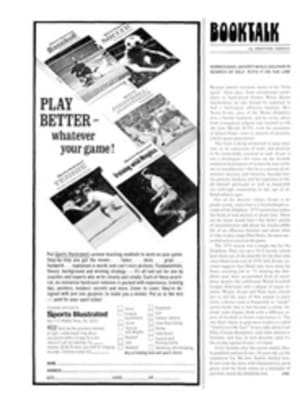
FERRARIS ARE CUT DOWN TO SIZE IN THE FEDERATION INTERNATIONAL DU SLOT
The Ferrari 512 booms out of the hairpin curve and heads down the straightaway in hot pursuit of a red Lola T-312. The Ferrari has been gaining steadily, but with only one lap to go the man at the controls begins to get reckless. At the next to last turn both cars disappear into a tunnel that runs through a mountain. They are almost even. In a few seconds a gleam of crimson emerges from the darkness and in one final rush the low-slung Lola crosses the finish line before the Ferrari even reappears. A moment of painful silence follows. There can be no doubt. A crash.
"Nuts. I never liked those Ferraris, anyway," says 43-year-old Sean Hay. He disgustedly strides the seven or so feet to the mountain whose peak comes to about chest level. Rolling up his sleeve, he sticks his arm into the tunnel and retrieves a racer, which, at first glance, seems to be about the length of his pinkie.
The scene is Plye-Wood International Raceway (named in honor of the Goodwood track in England), a 23-turn, 110-foot wood and plastic track located in Mike Zelinsky's basement on 10th Avenue in San Francisco. The vehicles are slot cars, miniature [1/64]th-scale models, which operate on electric current from two wires running along the roadway. A pin which is located under the minuscule front axle fits into a slot on the track and this holds the car in its lane. You control the speed by squeezing what looks like a Captain Video ray gun—actually it is a hand-held plastic rheostat.
Plye-Wood Raceway is home for the Federation International du Slot (FIS), a hardcore racing society whose 15 active members (median age 31) compete against each other as if they were on the real Grand Prix circuit. They sponsor a "regular" season of elimination races, score on a points basis, designate a Rookie of the Year and even hold an annual awards banquet (admission: $6.50). Contrary to popular opinion, the slot car business has not gone bust. After being slightly depressed in the late '60s, sales have almost doubled from the previous peak, with the industry doing about $175 million worth of business today.
Interteam squabbles that so often exacerbate the goings-on in the grown-up Grand Prix circuit are exaggerated at Plye-Wood. Technical points such as whether or not to use tire adhesion additives are argued over endlessly. There is an ongoing debate over the road safety of aerodynamic wings (recently banned again after an improperly set wing caused one hot racer to be propelled off the track and into an ashtray).
Rules governing team colors, official numbers, prominent identification of sponsor and height, length and width of vehicles are enforced as rigorously in this mini-motor sport as they are in the real thing. Closed cars must have windscreens and back lights. Open cars may not race without drivers, which are, in reality, disembodied plastic heads slightly smaller than baby peas.
The FIS was conceived in 1971 at The Sea Witch bar in San Francisco's Ghirardelli Square. Zelinsky, Sean Hay and Peter Hope Sr. would gather there each evening to argue the finer points of Grand Prix racing. Soon they found themselves at Zelinsky's apartment with a case of beer and a set of Sizzlers—rudimentary toy cars which, once electronically charged, race round and round an oval track until they run down. But with Sizzlers all one can do is sit and watch. The group's growing addiction demanded something more challenging—cars they could actually control. In 1972 Zelinsky bought his first set of slots and a pip-squeak track that fit on a five-by-nine-foot piece of plywood. He was hooked. The next step was to get a really elaborate layout. When he moved to a more commodious house in 1973, Plye-Wood Raceway was born. At $1.50 per foot of track and from $4 to $10 for each car, the whole setup cost about $400. Zelinsky's wife Barbara admits, "We bought our house so Mike could have room to play with his cars." As Zelinsky is fond of pointing out, "The rest is history."
Says two-time FIS champion Zelinsky, when asked for a rationale for his addiction, "I'm 33½ going on 14." He attends all major functions in a "Lord Plye-Wood" T shirt. He has a miniature Goodyear blimp suspended above his track, which he believes is the most sophisticated layout west of Pennsylvania. It has a full complement of pint-sized accouterments, including roadway lights the size of toothpicks and, for further verisimilitude, a tiny flashing yellow disaster signal.
Is Zelinsky serious? Well, yes and no. One minute he'll say, "To us this is a sport. We run elimination races exactly as the pros do." But then he'll downshift to a lighter tone: "You must drive within the conditions. There might be a pool of spilled beer on the track."
The point is that in Zelinsky, as in all his FIS members, two apparently incompatible attitudes coexist: purism and parody. The reason is simple. They are serious about what they're doing, all right, but their delightfully spontaneous whimsy keeps things in perspective (or at scale, if you will).
Not that they have anything to feel embarrassed about. One glorious day last February they made racing history by driving a modified Aurora "G-Plus" the astonishing total of 4,811 laps (100.27 miles) in 24 hours. Translated to normal scale this is 6,429 miles at an average scale speed of more than 267.89 mph, or more than 1½ times the highest average speed ever recorded for an Indianapolis 500. Mike Zelinsky was contacted by the publishers of the Guinness Book of World Records, who wanted to confirm that Plye-Wood International was indeed the sanctioning body of slot car racing. Naturally, Zelinsky said it was.
But at this moment the world champions aren't a bit pleased. They have accepted the challenge of an upstart Berkeley team to a grueling 12-hour enduro race. They have lined up track marshals and stewards and a brace of timekeepers. They have even notified the press. At the appointed starting time, 9 a.m., the opposition hasn't arrived.
After an hour's grace, Zelinsky places a hasty phone call. The challenging team, it turns out, is a fellow named Rick who can't get the day off from a Berkeley hardware store. And so it goes. Although the H.O. (1/64th) scale has replaced the gargantuan 1/24th (the smaller gauge is cheaper and crams more track into basements and living rooms), there still isn't enough top-notch competition around to make the FIS sweat.
Lacking an opponent, the learn decides on intrasquad sprints of 30 laps. The best race of the day pits 21-year-old Peter Hope Jr. against Billy ("C") Farlow, a newcomer and lead singer for Commander Cody and His Lost Planet Airmen. Farlow, who hadn't expected to race this day, nervously opens the cigar box that holds his entire fleet and selects a hand-painted A.A.R. Indy Eagle.
At the starter's signal Hope's Ferrari Daytona GT grabs the lead, with the Eagle close behind. By the end of two laps each car has spun off the track several times. Don't let the diminutive look of the cars fool you. Slot car racing takes skill and moxie. Too much speed and the cars zing off the track like darts from a blowgun; too little and they tumble down on the banked turns.
After a few more laps Hope and Farlow get over the jitters and pretty soon their cars are chasing after each other like hopped-up water bugs. The rest of the company, 20 in all, are cheering as if they are at Indy. That is, all except Gil Munz, once a mechanic for Charlie Parsons, former U.S. Road Racing Champion. He sits on the side compulsively fixing wheels the size of aspirin tablets with an assortment of tools so small they might have been fashioned from the microscopic bones of the middle ear.
Meanwhile, Hope, the 1974 FIS champion, is getting all he can handle from Farlow until Billy suffers a fatal spinout on the last lap. Despite his loss, the others are impressed with the rookie's showing. He is clearly someone to reckon with in the future. Zelinsky raises a cheer for Farlow, and Billy, exhilarated by his near victory, shoots back, "I guess I ain't a rookie no more." Move over, Mario Andretti—just about 1/64th of an inch.

